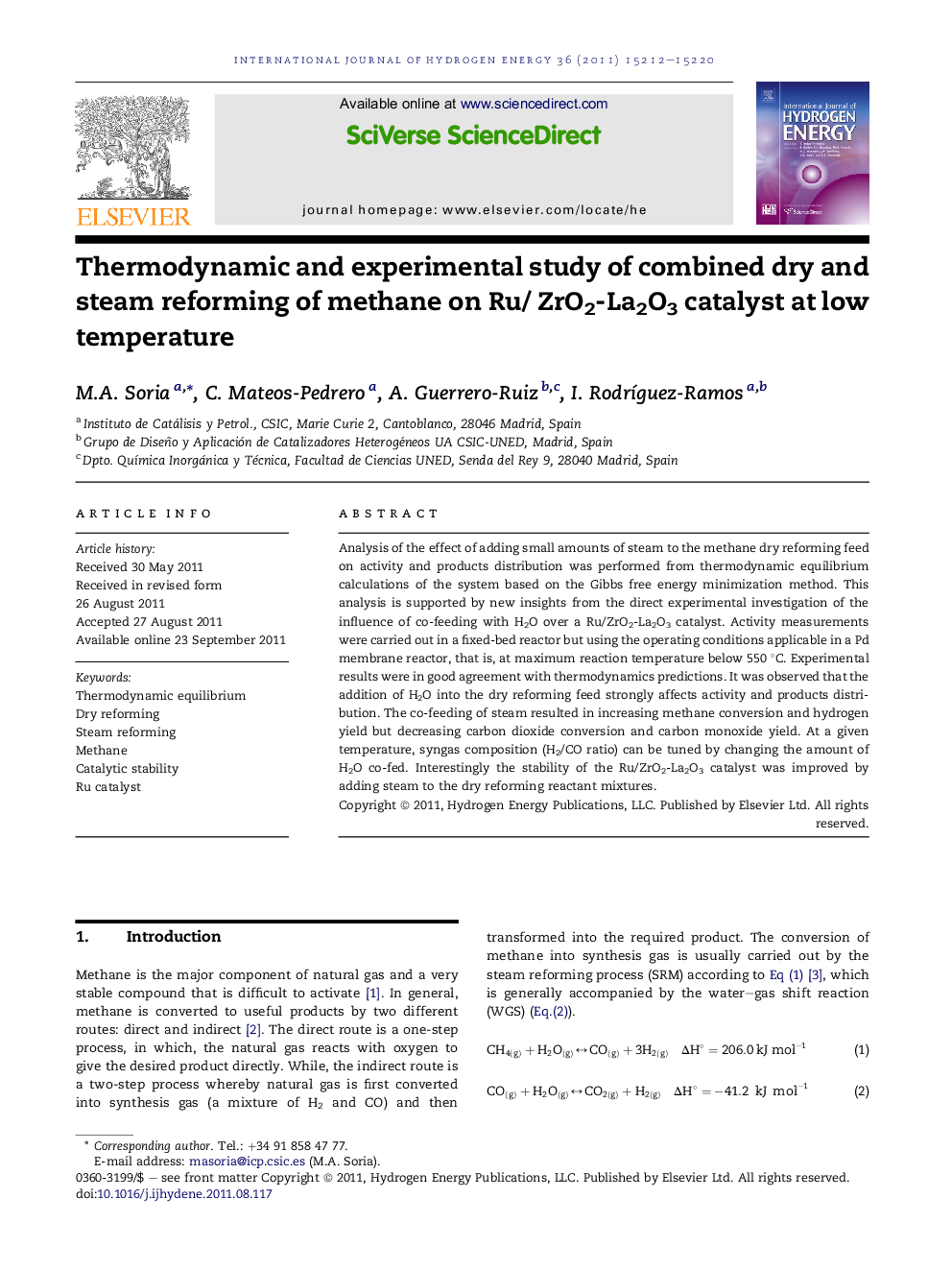| Article ID | Journal | Published Year | Pages | File Type |
|---|---|---|---|---|
| 1271814 | International Journal of Hydrogen Energy | 2011 | 9 Pages |
Analysis of the effect of adding small amounts of steam to the methane dry reforming feed on activity and products distribution was performed from thermodynamic equilibrium calculations of the system based on the Gibbs free energy minimization method. This analysis is supported by new insights from the direct experimental investigation of the influence of co-feeding with H2O over a Ru/ZrO2-La2O3 catalyst. Activity measurements were carried out in a fixed-bed reactor but using the operating conditions applicable in a Pd membrane reactor, that is, at maximum reaction temperature below 550 °C. Experimental results were in good agreement with thermodynamics predictions. It was observed that the addition of H2O into the dry reforming feed strongly affects activity and products distribution. The co-feeding of steam resulted in increasing methane conversion and hydrogen yield but decreasing carbon dioxide conversion and carbon monoxide yield. At a given temperature, syngas composition (H2/CO ratio) can be tuned by changing the amount of H2O co-fed. Interestingly the stability of the Ru/ZrO2-La2O3 catalyst was improved by adding steam to the dry reforming reactant mixtures.
